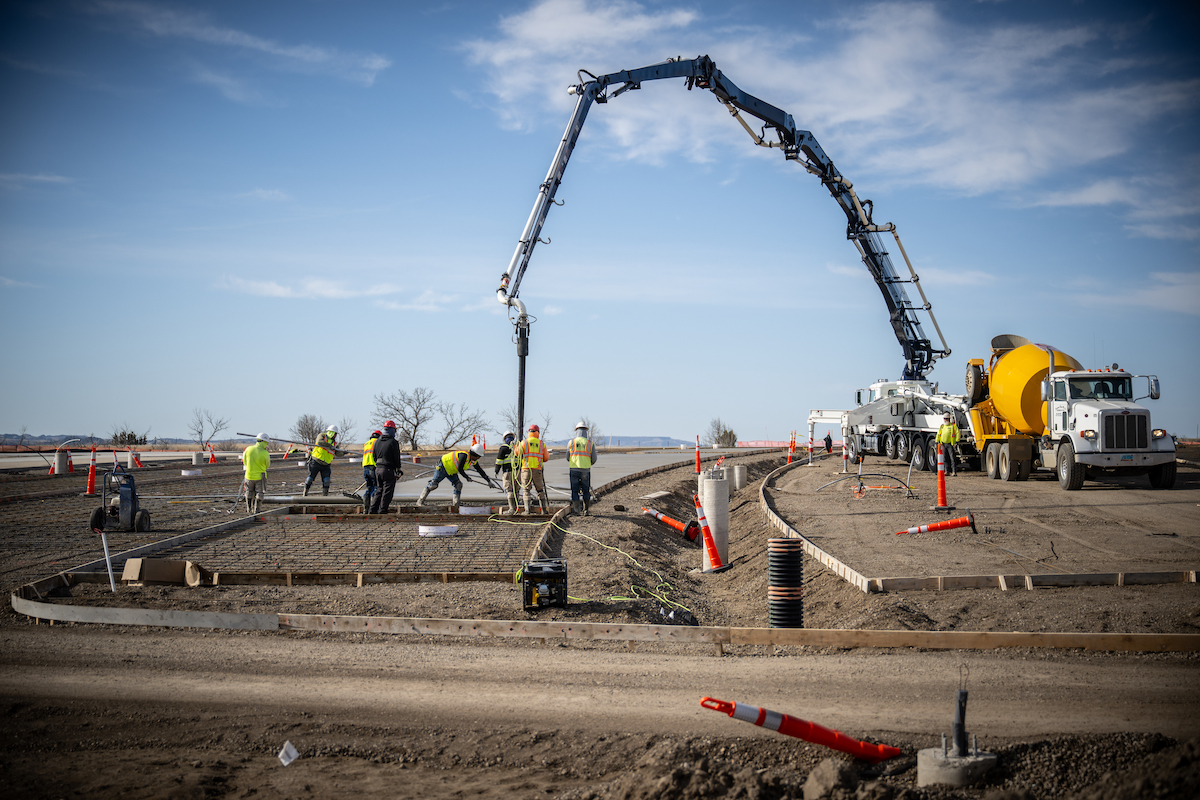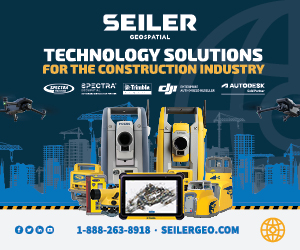Wheel loaders. Pay loaders. Front-end loaders. Many different names, but all ultimately describing the same thing: rubber-tired articulating loaders that primarily operate a bucket on the front end used for loading trucks on jobsites, hoppers in production plants, and any other applications for moving material.
They’re also compatible with a full complement of attachments: forks, brooms, snow pushers – all factors to take into consideration when sizing a loader for your operation.
Why is it important to take a little extra time in weighing and considering wheel loader sizing? Pricing and lifetime owning and operating costs can fluctuate by tens of thousands of dollars from one size class to another. Taking a proper look at your operation, capacities, cycles, and physical space – as well as analyzing available data from the machine – allows you to select the machine that will give you the best combination of performance and efficiency throughout its lifetime.
Match the Bucket to the Truck
This may be the most obvious of considerations – especially in production environments or mass excavation sites where cycle times are important. A good target is a bucket/truck combination that loads a truck in three to four passes, but there are other considerations as well. For instance, how long does it take a truck to complete its cycle once filled? Any combination of a truck waiting and idling too long to be filled, or a wheel loader idling and waiting too long for trucks to get back to the loading position, indicates a mismatch and suboptimal combination of bucket capacity and truck payload.
When we talk about sizing a wheel loader, bucket width also comes into play. This can relate to loading double pup trailers, pickup trucks, small dump trailers, and hopper widths. Too large and we are spilling or wasting material. Too small causes multiple passes. And transportation of anything over 102 inches wide requires an over width permit during transport.
Match the Bucket to the Hopper
This is a similar thought and concept applied to production plants such as concrete and asphalt production, aggregate processing, or any other operation found in many sand and gravel operations. In each of those applications, a single loader is typically feeding a series of hoppers that feed aggregate into plants for producing a final product. Hoppers that are continually overflowing with material as the plant catches up is a sign of too large a loader. Frequently empty hoppers hungry for the next drop of material might tell you that you can use a larger bucket or machine. Idling also tells a story – if you have a loader that is idling excessively, that tells you that the operator is waiting on material to process through, and that you may be able to get by with a smaller loader.
Size and Space
This is a “captain obvious” factor, but one that can’t be overlooked. Machines acquired with the theory of the “the bigger machine with the biggest bucket available” may prove ineffective and actually stall productivity when trying to operate on more confined jobsites. Conversely, too small of a loader could be a nuisance on a larger jobsite and be unable to feed all the different operations and disciplines with the material they need, when they need it. Understanding jobsite flow is critical.
Dump Height
There are obvious considerations here, as well as some less obvious considerations. Hinge pin height/dump height is a very important spec. Knowing the height of trucks you typically load will help you zero in on the right machine. The large machine that loads out a dump truck at the gravel pit is massive overkill if you only need a yard loader that fills mid-sized truck beds or even pickup trucks at landscape supply yards.
It's also important to know what type of overhead obstacles you have on site. Are you limited in how high you can raise your lift arms because of the structure where material is stored or because there are overhead wires on your site? In these cases, you may be looking for a smaller loader that can handle larger buckets (within recommended manufacturer thresholds).
Operating Weight for Transport
What are the weight limits associated with your truck and trailer combination, or are there weight limits associated with the roads and highways around your typical jobsites? Some of this can be worked around by roading that loader to a site, but factoring in your transportation logistics will help narrow down machine sizing.
Electrification
Electrification continues to be one of the biggest buzz words in the industry – and while we often think of this style of loader as production beasts, there are certain applications where smaller loaders are practical and drive specific advantages. We’ve seen large-scale industrial building construction projects, warehouses, or big box store renovations where front-end loaders are operated indoors and around people. Here, obviously, smaller loaders have an advantage – and electrified machines can help eliminate engine emissions in the workspace and improve overall communications through quieter operation.
Electrification will excel in these applications where it drives numerous benefits – as well as there being a source of power for charging.
Sometimes Bigger is Better
It’s been our experience that, sometimes, contractors just buy skid steers and compact track loaders because “it’s what we’ve always bought.” That’s fine – but compact wheel loaders and small articulated loaders have continued to experience increased demand, and much of that demand revolves around the ability to reach higher and deeper than those more compact machines, as well as the ability to provide the operator a greater perspective of the work area as they sit higher up in the machine, when compared to a skid steer or CTL.
There is also a common attachment interface between skid steers, CTLs, compact wheel loaders and select small articulated loaders. There could be a strategy around deploying multiple machines and having attachment commonality across all of them, depending on the types and sizes of jobs you work on.
Learning From Payload Systems
Integrated payload systems are invaluable in terms of ensuring proper loading of trucks, or proper mixing of feed in agricultural operations. Another thing they can tell you is whether the bucket and machine is properly sized to the application. If you can three-pass load a truck, but that bucket is never reaching capacity, or you work in the feed lot all day and all your mixes never quite fill up an entire bucket – you may be able to consider a smaller loader in those operations.
What You Can Learn From Telematics
Excessive idling identified via telematics can indicate any number of things – one of which could be that the equipment is not optimally sized to the application. A simple example: a wheel loader with a six-yard bucket may be matched with a hopper that can’t handle that much material at once. As such, that loader completes a fairly simple cycle but then sits and waits for the material to cycle through the hopper before it can dump the next bucket. This idling is not an efficient use of the machine and may indicate any number of possible improvements to your operation:
- Do you need that large wheel loader with the six-yard bucket or would a smaller (lower cost) wheel loader be more efficient?
- Are there improvements needed in the plant to allow it to process material faster? Identifying a piece of equipment not operating to its full potential can be a symptom of other efficiencies upstream or downstream of that machine. Maybe the problem is not with the machine, but with the workflow.
All these factors and considerations will help you properly size a loader for your unique operation, and ensure all that profitability is going to the work and not being eaten away by inefficiencies, ineffective performance, and downtime.








































































